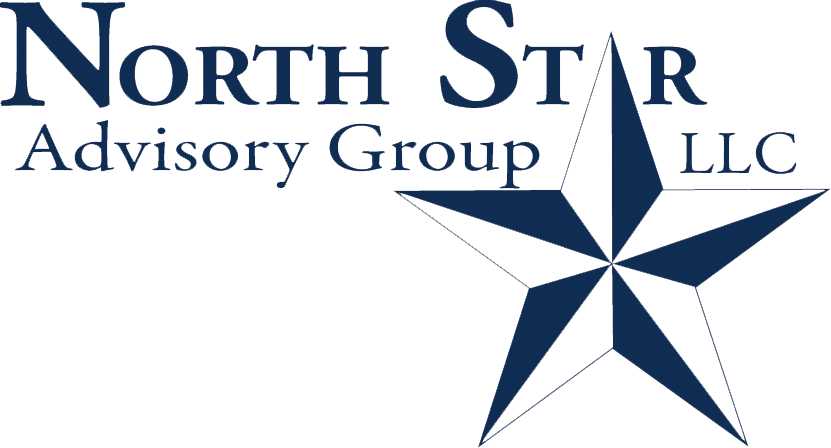Each month we ask clients to spend 5 minutes to read through our newsletter to with the goal of raising their investor IQ. What should investors be focusing on this month?
Last month we stated that “things are going to get better.” This month we can already see that current indicators are coming off their worst levels. However, investors need to remember that the economic activity being reported by the media is still looking back over the past few weeks and it is known that activity is still going to be very light over the next few months. Production and consumption will continue to pick up across America as each state is slowly re-opening with contingency provisions in case they need to reinstate stay-at-home orders again. There is not a playbook for politicians to follow. So it is understandably frustrating that reopening plans continue to change on the fly.
While a mass produced vaccine is likely a year away, promising immuno therapy options in combination with Stimulus from the Fed and the growing willingness of citizens to re-enter the work force and world with masks is paving a way for the economy to re-open. Stop and think for a second… how many people do you know (including yourself) that have already purchased masks (with customized prints)? Had the thought of buying or wearing a mask in pubic even crossed your mind in December 2019? Many of these masks were purchased with customized prints and with the intent to be worn. This is a huge sign that our economy and consumers are quickly evolving. I have mine and I have even joked about getting matching mask and tie sets. Somebody has to be a trend setter, right?
Here are the key topics that we cover this month:
- Paycheck Protection Program (PPP) safe harbor announced
- The Fed is saving Wall Street in order to save Main Street
- Has the market broken Warren Buffet’s process or just time?
- S&P 3100 & Dow 25750 by year end?
- Small business pre-existing conditions may lead to their death
- Economic downturn trends are reversing in Asia
- More stimulus is coming
- Where will the equity markets go next?
Paycheck Protection Program (PPP) safe harbor announced
We have never before seen a program with the size, scale and speed of the PPP before. The best analogy that we can share is that the PPP is akin to trying to fly a plane while building it. There are two major updates to the PPP this week.
We are still finding clients that have not applied and encourage all business owners to have a conversation around the application and benefits of this program to your business. The SBA has even opened up the program to employers without a W2 payroll with the second round of funding.
First, the safe harbor deadline for return of PPP loans HAS BEEN EXTENDED TO MAY 18, 2020.
Second, after 3 weeks of threats, the SBA has relaxed its position on borrowers who received PPP loans of less than $2 million, providing a complete safe harbor for the “uncertainty/necessity” certification.
Borrowers with larger loans can also breathe easier; they will have a chance to repay upon the SBA’s request, before facing liability.
According to SBA FAQ #46, all companies that, together with affiliates, borrowed less than $2 million “will be deemed to have made the required certification concerning the necessity of the loan request in good faith.” Borrowers with loans of $2 million or more “may still have an adequate basis for making the good-faith certification, based on their individual circumstances in light of the certification and SBA guidance.”
One of the stated purposes of the safe harbor is to allow the SBA to focus its enforcement attention on larger loans. In spite of this heightened focus on larger loans, the SBA has nonetheless reduced a great deal of anxiety by providing companies that borrowed at least $2 million a future option to repay their loans without immediate criminal prosecution. The SBA had previously set a deadline of May 14 to repay without liability.
In the past few weeks, the SBA has come under criticism for creating a great deal of concern among small- and mid-sized businesses, by signaling that it will focus on a company’s liquidity, rather than on the “uncertainty” caused by Covid-19. That raised the question of: How much in liquid assets would make me ineligible? The SBA’s position seemingly contradicted the spirit of, if not the letter of, the CARES Act, which specifically waived consideration of whether the applicant had other sources to obtain a loan. Three borrowers filed a federal lawsuit on the topic.
The “uncertainty/necessity” certification was one of two major pieces of guidance that borrowers were awaiting. The second relates to forgiveness. The 8-week period of the earliest PPP loans will be expiring by the end of May, so the SBA is likely to provide parameters on forgiveness before then.
The above updates on the PPP are provide by our attorney friends at Cavitch, Familio & Durkin and Thompson Hine LLP. We appreciate their continued support and timely expertise.
The Fed is saving Wall Street in order to save Main Street
The steps that have been taken by federal, state, and local officials to mitigate the spread of the virus will limit spending and hurt the incomes of businesses and households, leading to a recession. The Fed is trying to ensure that credit continues to flow to households and businesses during this difficult time and that the financial system doesn’t amplify the shock to the economy. It also wants to do what it can to limit the permanent damage to the economy so that when the pandemic recedes, the economy can grow again, and supply goods and services to meet demand. As our colleague Ben Bernanke, the former Fed chair, said (in so many words) during the Great Recession: We didn’t set out to save Wall Street, but in order to save Main Street, we had to save Wall Street.
Click HERE to review an extensive list of what the Fed is doing in response to the COVID-19 crisis. The list was created by the Brookings Institute. The Brookings Institution is a nonprofit public policy organization based in Washington, DC. Our mission is to conduct in-depth research that leads to new ideas for solving problems facing society at the local, national and global level.
S&P 3100 & Dow 25750 by year end?
Investors are expressing confusion on how the market can be at current levels while we are experiencing the depths of economic activity for the Covid-19 recession. The following candid summary from Brian Wesbury, Chief Economist at First Trust, does a great job of explaining why we are here and where we should be headed:
“In December 2018 with the S&P 500 at 2,500, we forecast it would hit 3,100 by the end of 2019 and then pushed our forecast to 3,250 as stocks soared. The S&P 500 rose 28.9% in 2019 and hit that revised target on the first day of trading in 2020.
We then raised the target to 3,650 for the end 2020, and the way stocks were moving higher in January and February made that forecast look reasonable. But then the world took a detour into the Coronavirus Contraction. As a result, we are adjusting our year-end 2020 target down to 3,100, with the Dow Jones Industrials average finishing at 25,750. That would be a moderate gain of 5.8% from the close on Friday May 8th.
The range of plausible outcomes for the rest of 2020 is very wide right now. Key variables include factors that are normally irrelevant to forecasting markets such as the spread of the Coronavirus, how quickly the economy opens, the development of therapies or a vaccine to fight the disease, and how quickly people are willing to go back to normal.
With the economy getting crushed, some analysts are wondering how equities could have bounced so hard from the March lows. We understand their confusion. With unemployment likely above 15% and real GDP falling roughly 30% in Q2, how can equities be doing so well?
One key to understanding this is that investors don’t buy shares of GDP, they buy ownership stakes in a distinct set of companies, many of which are doing quite well despite the general economic carnage.
Imagine a company that has a major competitor nearby. One day, completely out of the blue, the competitor’s facilities are all destroyed by a meteor. Obviously, no one would celebrate this catastrophe. However, when competitors go away the enterprise value of the surviving company rises, and you don’t have to be an astrophysicist to figure that out.
In many ways, the spread of the Coronavirus has given larger well-capitalized companies, particularly technology companies and big box stores that were allowed to stay open, an advantage over Main Street competitors. And unlike Main Street businesses, a larger share of these companies are publicly traded.
Meanwhile, our capitalized profits model for equities, based on profits and interest rates, suggests a 3,100 level for the S&P 500 would not be overvalued. To put this in context, a 3,100 level assumes that profits fall by 60% AND the yield on the 10-year Treasury Note climbs to 1.25%. We forecast profits will fall about 25% this year and the 10-year Treasury will rise to just 0.9% by year-end. In other words, even at 3,100 we believe the S&P 500 will still be undervalued. And with profits rising in 2021, we think the S&P 500 can then rise to 3,650, a year later than we originally forecast.
One reason to be bullish on equities is that these days Quantitative Easing by the Federal Reserve is going straight into the M2 money supply and not into excess reserves. In the past three months, M2 has climbed at a 66% annualized rate, the fastest rate we know of in history.
Meanwhile, the federal government has ramped up deficit spending (with unemployment insurance and loans/grants to small businesses) to try to offset private-sector losses in income. Regardless of what we think of these policies, the effect will be to support equity prices in the year ahead.”
Small business pre-existing conditions may lead to their death
It is now widely known that humans are not all equal in their ability to fight off Covid-19. Humans have 9 factors that increase the risk and severity of coronavirus infection:
- Adults age 65 and over
- Chronic lung disease (asthma, bronchiectasis, COPD, cystic fibrosis…)
- Immunocompromised people
- Heart disease
- Diabetes
- Liver disease
- Kidney disease
- Obesity
- Neurological disorders
While the list is long, the majority of the population can likely get Covid-19 with little to no symptoms with another portion getting prolonged and worse flu like symptoms.
So what does this have to do with business? Well… over the past few weeks it has become apparent that some businesses also have pre-existing conditions that will also increase the risk and severity of Covid-19 on their business. Here is a sample list of pre-existing reasons for bankruptcies:
- Declining sales (think Neiman Marcus, JC Penny and J. Crew)
- Oversaturated market (Brio/Bravo bankruptcy and while many other chains were already closing certain locations)
- Unsustainable debt levels
- Poor management
- Lack of access to reserve capital (savings, business line of credit…)
- Poor quality of employees
- Low product quality and lack of innovation
- Reluctance to adapt and incorporate new technology (online sales and food delivery)
So when you take a step back and evaluate the landscape, it is easier to see why there will be a round of bankruptcies. However, may of the near-term business deaths were already expected and the timeline is just being accelerated. While it is hard to admit, times of crisis do reward businesses who have been doing the right thing and punish those who have been neglecting the total financial health of their business.
Economic downturn trends are reversing in Asia
We are seeing slow, but widespread economic recovery taking place in Asia as the region is slowly starting to open back up. The following is just a sample of the forward-looking indicators that are increasing and showing signs of life ahead:
- Large machinery sales have increased
- Factory production is picking up
- Auto congestion/traffic is picking up and so is gasoline consumption
- Restaurant and coffee chains are close to seeing all stores being open
- Theme parks are opening up
More stimulus is coming
The current amount of stimulus has been staggering, but more is needed and will be approved.
For the past 2 months we have written that stimulus bill #3 would be followed by an estimated $2 Trillion bill #4 in June and then another $1-2 Trillion bill #5 in Q4 2020. This week democrats provided a $3Trillion outline for their version of bill #4. The Senate and Congress both return to DC in May and will begin to work through the negotiations on the details for bill #4. Bill #4 will include both financial subsidies and initiatives to help grow and build our economy recover as we head into 2021 and beyond. Bill #5 is expected to be solely focused on expanding the economic growth initiatives.
Where will the equity markets go next?
In the short-term, the market is fairly valued (not too high and not too low). Looking further out, we feel differently.
It is possible to see the market recover close to prior highs by yearend 2020 while the economic recovery maybe delayed until mid to late 2021. Market valuations typically reflect earnings 6-12 months out. Right now, we could be entering a period of time when the market is willing to look out 12-18 moths. This is why we are seeing the market rally at the same time that we are experiencing peak number of new daily cases, deaths and unemployment. We do need to remember that we are going through a rapidly evolving situation with tough days ahead.
Therefore, our vision and communication has not changed since 2010. We still believe we are in a secular bull market, which typically lasts around 15 years. Historically, it is not uncommon to have a bear market (which essentially occurred in Q4 of 2018) or even a brief recession (which we may be experiencing right now) during a secular bull market. Markets will trade on fear or momentum from time-to-time. In-between earnings reports, the markets may even trade on a single data point (like the new cases and death count of Covid-19). Eventually, the markets return to trading on fundamentals. We believe that fundamentals will not return until we get into Q3-2020 and the Fed and Treasury are doing a tremendous job of providing a financial bridge to get through the next few months.
We are passionately devoted to our clients' families and portfolios. Let us know if you know somebody who would benefit from discovering the North Star difference, or if you just need a few minutes to talk.
As a small business, our staff appreciates your continued trust and support as we all work through these stressful and trying times for our country and world.
Please continue to send in your questions and see if yours gets featured in next month’s Timely Topics.
Best regards,


Mark Kangas, CFP®
CEO, Investment Advisor Representative


